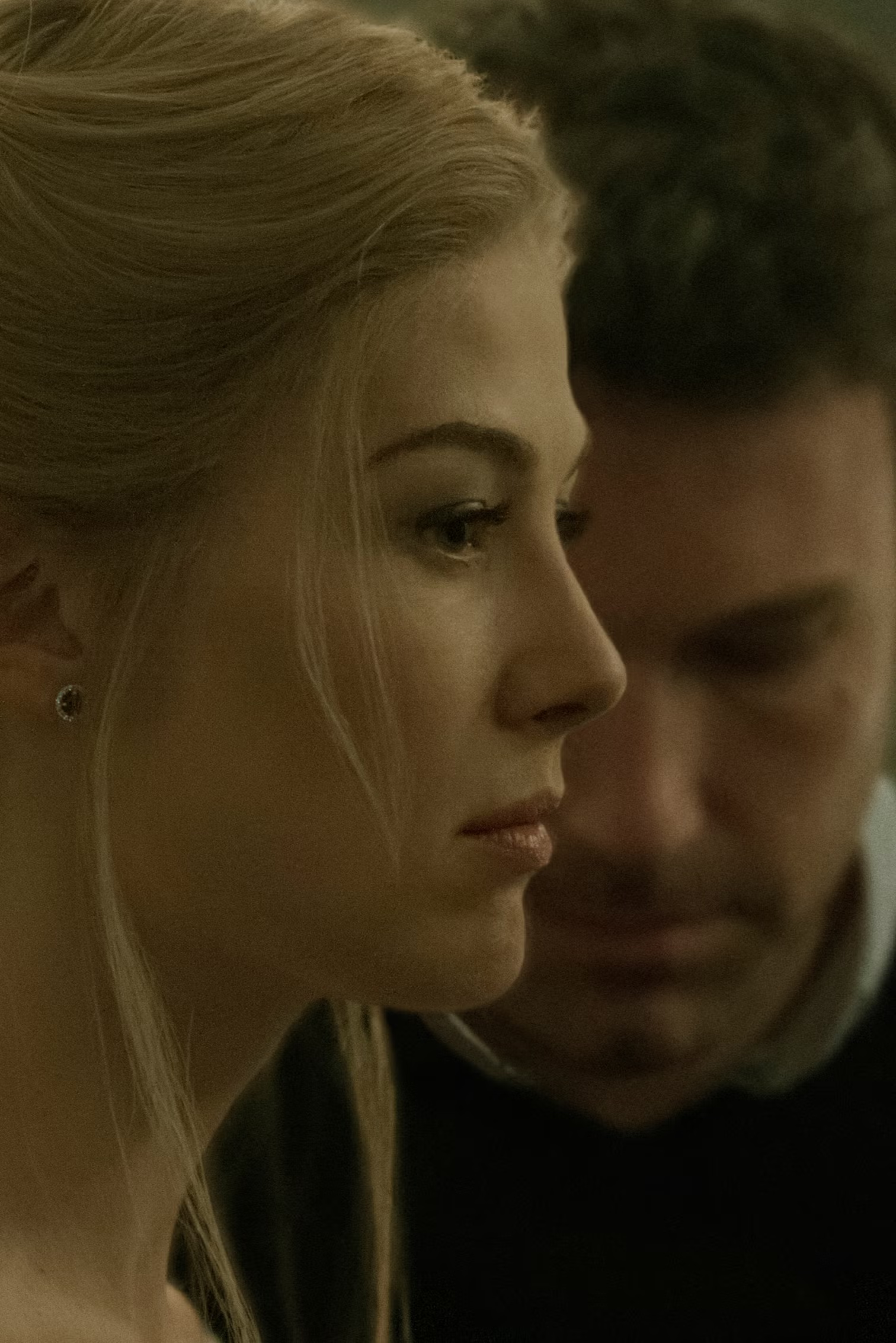Your support helps us to tell the story
Support NowThis election is still a dead heat, according to most polls. In a fight with such wafer-thin margins, we need reporters on the ground talking to the people Trump and Harris are courting. Your support allows us to keep sending journalists to the story.
The Independent is trusted by 27 million Americans from across the entire political spectrum every month. Unlike many other quality news outlets, we choose not to lock you out of our reporting and analysis with paywalls. But quality journalism must still be paid for.
Help us keep bring these critical stories to light. Your support makes all the difference.
Rhiannon Lewis is not important. The men she sleeps with won’t text her back. She lives alone, surrounded by the belongings of her dead dad and her dead dog. Her sister bullies her, as does her old high school bully, who continues to harass her. At work, she’s ignored by her colleagues, passed over for a promotion and, perhaps worst of all, her boss insists on calling her “Sweetpea”. She is, in short, a loser. A loser, that is, until Rhiannon gives into her violent, homicidal impulses. Once she starts killing people, she’s much more fulfilled, happy. She’s seen.
Rhiannon is the pathetic yet dangerous star of Sweetpea, Sky Atlantic’s new adaptation of CJ Skuse’s 2017 novel of the same name. Over six episodes she stalks and attacks those she deems deserving of punishment, and you honestly kind of root for her for it, even though you know you shouldn’t. Skuse’s young adult novels were once described as a linchpin in the rise of “antiheroines”, girls behaving badly in literature, but today they might be known by another, more modern, more internet-friendly name. They would be considered femcels.
Unlike its more sinister cousin, the incel, the femcel is a creation tied almost exclusively to aesthetics and the internet age. According to online oracle KnowYourMeme, femcels are described thusly: “a slang term [for] the female version of an involuntary celibate or incel”, dating all the way back to the early Noughties days of internet forums. KnowYourMeme’s biggest rival, the institution that is Urban Dictionary, is more accurate though: there, a femcel is defined as a woman who doesn’t have sex, voluntarily or otherwise, but more importantly, a “chronically online” woman who is generally “a social reject, especially in real life, and mostly [has] online friends (if any IRL friends at all)”.
Femcels defy actual definition because it’s mostly an expression of taste. They exist primarily on visual-based platforms such as Instagram and TikTok, where it’s easy to communicate the aesthetic that’s become synonymous with the term “femcel”. There are femcel bingo cards (points awarded for “poor posture”, “poor emotional regulation” and “violent misandrist takes”), femcel playlists (hits by Mitski, Melanie Martinez, Phoebe Bridgers, Fiona Apple), and a wealth of femcel fictional characters to identify with, from Gone Girl to My Year of Rest and Relaxation, The Virgin Suicides to The Bell Jar, and, of course, Fleabag. Although at first disparate examples, what unifies them all is a sort of feminine ennui, a sense of loneliness or rage, a character or celebrity that can become an insert for misery and misanthropy.
Now, Sweetpea’s Rhiannon Lewis will join the femcel canon. On these platforms, populated in huge numbers by teenage girls, there is little talk about real-life celibacy, voluntary or otherwise. And that’s not even because TikTok’s community guidelines ban these terms (this is why you see so many videos posting about “seggs” and “unaliving yourself”).
You would be forgiven for thinking: that all sounds like pretty miserable stuff. So why does it resonate with so many young women? Since its emergence as a micro-trend a few years back, the loose umbrella of the femcel aesthetic has continued to simmer away in popularity. Like all internet trends, it’s resolutely satirical and defies logic, but let’s put it under the lens anyway. To look at it one way, femcels are misandrists in pink bows, deliberately ensconcing themselves away from men and anything considered related to traditional masculinity. Aesthetically, femcels lean towards clothes and hairstyles considered “girly”, almost sinisterly Lolita-esque at times, while remaining adamant that these choices are a rejection of the so-called “male gaze”.
Today’s femcels also share with the sad girls of Tumblr a problematic tendency to romanticise loneliness, sadness and struggle
Earlier this year, research published by the National Institute of Health collected data from 24,000 femcel posts. Researchers used as their starting point a recent “sexual frustration theory” developed by the University of Alabama and applied – unsurprisingly – mainly to incels. It posited that “frustration arising from unfulfilled desires to have sex, unavailable partners, and unsatisfying sexual activities appears to increase the risks of aggression, violence, and crime associated with relief-seeking, power-seeking, revenge-seeking, and displaced frustration”.
The femcel researchers found that, like incels, femcels struggled with sexual frustration but that the gender dynamics of sex and power made them react differently. Rather than turning their frustrations out onto the world, as with incels, they turned it in onto themselves. Unlike fictional machiavellian femcels like the protagonist of Sweetpea, self-described femcels in real life “were more interested in their own frustrations” and, generally speaking, “exhibited less support for aggression, violence and crime than what has been reported about male incels”.
“Although some femcels referenced their anger, hatred, or desires for revenge, this antipathy may have been rooted in their concerns about how to find a suitable intimate partner while avoiding the threat women often face from violent men,” the study concluded.
Where incels blame women for their unhappiness, femcels blame themselves. Femcelism is a response to the patriarchal structures that govern our society, whereas incelism is misogynistic violence that exists within those patriarchal structures. Understandable enough. But while it might be convenient to take this more academic reading as an explanation for the femcel’s internet and cultural prominence, that’s still not the whole story.

Yes, to a degree, femcelism is a reaction against prescribed femininity and patriarchy. TikTok and Instagram mean we live in more of a surveillance culture than ever before, encouraged to constantly look at ourselves and each other, or to contort ourselves into increasingly more suffocating boxes – from trad wives and “clean girl aesthetics” to horror-film style “morning sheds”, where women undo all their increasingly ridiculous overnight beauty regimes to look “naturally” beautiful when they wake. It’s no wonder then that a sort of “femcelcore” has arisen as a reaction to those trends, a messier, angrier, more unapologetic pushback to ideas of femininity that have become not more modern but more conservative in recent years. Femcel posting is a way for these women, many of them teenagers, to express the “ugly” parts of themselves and the manipulative, toxic and angry parts. (And, because this is the internet, those parts get their own subcultures too, under hashtags like “female manipulator”, “female rage” and “toxic femininity”.)
In many ways, TikTok’s femcels are merely the descendants of Tumblr’s “sad girls”. On that other ancient social network, teenage girls could navigate their angst the only way they knew how, through media. Like femcels, they adopted TV shows, films and songs that they thought expressed their rage, sadness and frustration. And it created a community around those things, a reassurance that although you might be struggling, you’re not alone.
But today’s femcels also share with the sad girls of Tumblr a problematic tendency to romanticise loneliness, sadness and struggle. TikTok’s predecessor was frequently criticised for glorifying many of the mental illnesses which disproportionately affect young girls, particularly when it came to self-harm and eating disorders. At the height of its 2010 heyday, the site hosted so many “thinspiration” and graphic self-injury images that it was forced to moderate itself, banning the content wherever it popped up.

A few years ago, when it first started gaining cultural cachet, I wrote about the satirical nascent femcel identity. Following that, in a viral video essay – in which my name is mispronounced, but that is fine (!!!) – the YouTuber Mina Lee describes femcels as “Tumblr sad girl 2014 repackaged”. And although it’s often seen as a rejection of a certain type of femininity, it’s still the case that the parameters of the alternative proposed by femcels are narrow and prescriptive. These posts are populated by femcels, fictitious and real, who are overwhelmingly white and predominantly waifishly thin. And although femcelism is ostensibly an apolitical subculture, Lee’s video, a deep dive into the intersection between eating disorders and femcelcore, also explores the undercurrent of alt-right transphobia that bubbles beneath the surface in some pockets of femcelcore because of the gender essentialism that underpins its existence. Femcels might think of themselves as ironic and inherently self-conscious but it doesn’t eliminate these more toxic offshoots of self-described “toxic femininity”.
Today the term “incel” has a life of its own. Few people remember its inception, overshadowed by the violent crimes committed by its infamous followers. Few know that the incel movement was actually created by a woman. In the nascent days of the internet, the founder of the world’s first incel forum was a queer woman known as Alana. A lonely college student in Ottawa, in 1997 Alana started a support group and named it Alana’s Involuntary Celibacy Project, after the lifestyle she herself was living.
But as the support group grew and morphed, Alana’s life changed. Eventually, she found a partner and, predictably, spent less time online and more time with them. Although she expected her project to die off in her absence, it flourished instead. Today, the incel movement is totally devoid of its original mission. And in a way, a much less violent and dangerous way, femcelism is too. Perhaps that’s the only way it works, a fantasy without meaning or consequence, expressed only through fictional characters, sad songs, and memes.
Disclaimer: The copyright of this article belongs to the original author. Reposting this article is solely for the purpose of information dissemination and does not constitute any investment advice. If there is any infringement, please contact us immediately. We will make corrections or deletions as necessary. Thank you.



